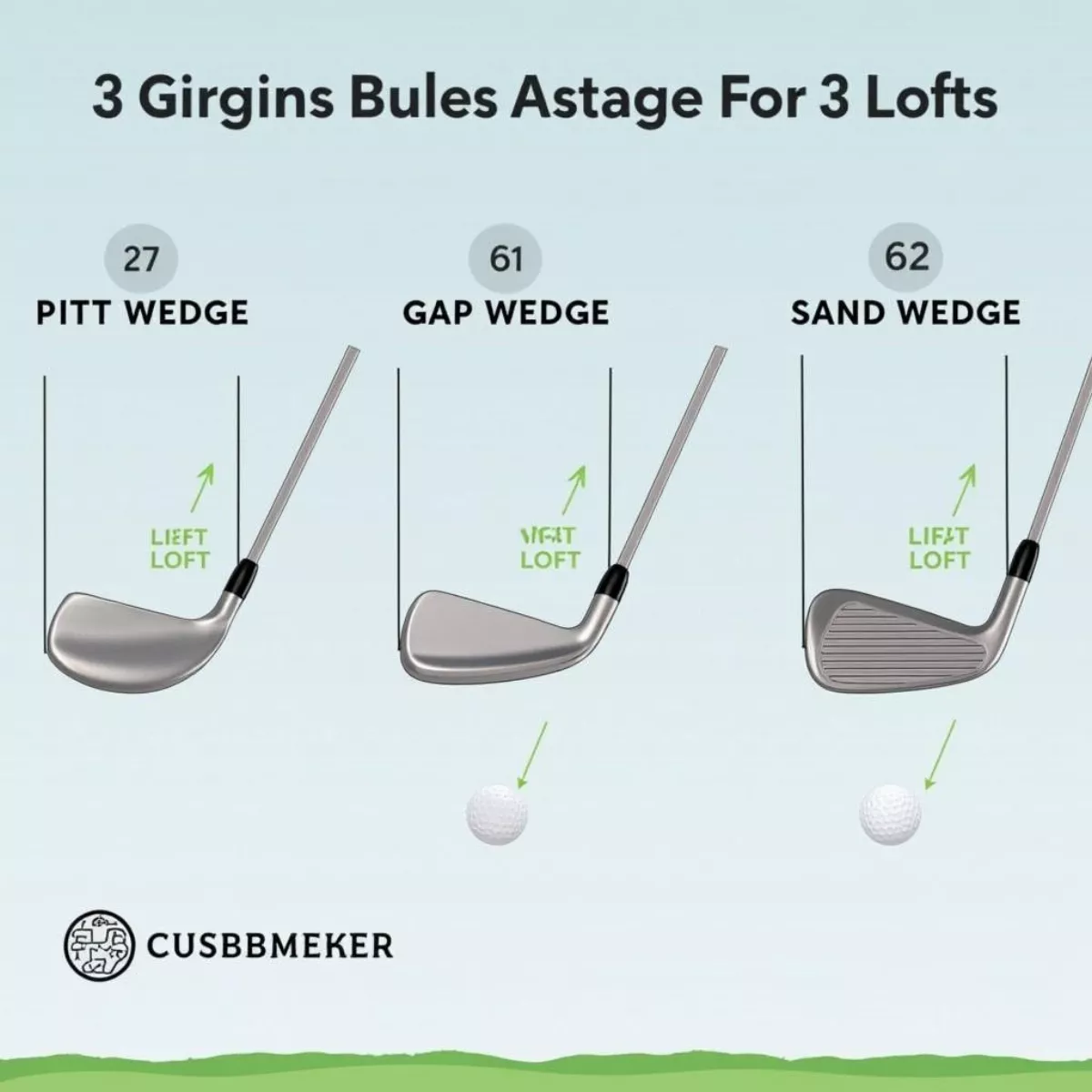Chipping around the green can be challenging for many golfers, whether you’re just starting out or you’ve been playing for years. Selecting the right club is essential in lowering your short game scores and boosting your confidence. But with a variety of options available, how do you know which club to use? In this guide, we’ll break it down in a friendly, conversational tone that makes the technical aspects fun and easier to digest.
Understanding the Short Game
Before diving into specific club recommendations, it’s crucial to understand what chipping is. Chipping refers to a short shot played from near the green, typically within about 30 yards, where the ball is lifted into the air for a brief amount of time before rolling towards the hole. The aim is to get the ball close to the pin, either to save par or set up an easy birdie putt.
Common Clubs Used for Chipping
The most common clubs used for chipping include:
- Pitching Wedge
- Gap Wedge
- Sand Wedge
- Lob Wedge
- 7-iron or 8-iron (for bump-and-run shots)
Let’s break down these options and see when you should use each.
1. Pitching Wedge
A pitching wedge has a loft of around 44 to 48 degrees. It’s a versatile club designed for full swings but can also be effective for chipping. Use this club when:
- You need to cover some distance but still want your ball to get airborne before rolling.
- The grass is relatively short, and the shot requires a bit more roll after the ball lands.
2. Gap Wedge
The gap wedge comes in handy between the pitching wedge and sand wedge, with a loft of about 50 to 54 degrees. This club is ideal for:
- Shots that require a bit more loft than a pitching wedge but aren’t high enough to necessitate a sand wedge.
- Getting the ball up quickly and landing softly on the green.
 Golf Club Loft Comparison
Golf Club Loft Comparison
3. Sand Wedge
Typically lofted at 54 to 58 degrees, the sand wedge is perfect for sandy or lush conditions. Use it when:
- You’re close to the green, and you want to ensure the ball floats onto the green smoothly.
- The grass is thick or the lie is muddy, making it harder to execute a clean shot with lower-lofted clubs.
4. Lob Wedge
The lob wedge boasts a loft of 58 degrees or more. It’s designed for high, soft shots. This club is best when:
- You have an obstacle—like a bunker or steep slope—between you and the pin.
- You need to stop the ball quickly due to a tight pin placement.
 Golfer Chipping Over Bunker
Golfer Chipping Over Bunker
5. 7-iron or 8-iron (Bump-and-Run)
Using a 7-iron or 8-iron can be the best option when you want a bump-and-run shot. These clubs are excellent for:
- Flat lies and situations where you can let the ball roll a considerable distance after landing.
- Extending your range for a longer shot while still remaining accurate.
Factors to Consider When Choosing a Club
Selecting the right club isn’t solely about loft; other essential factors include:
Course Conditions
- Hard or Soft Ground: Hard ground tends to call for less loft; soft ground may require a higher loft club to avoid digging in.
- Grass Length: The type of grass you’re playing on will impact how the club interacts with the ball. Thick, lush grass may necessitate a sand or lob wedge to control the shot’s flight.
Distance to the Pin
- Assess how much power you’ll need. Closer distances allow you to utilize higher lofted clubs, while farther distances let you opt for lower lofted options.
Lie of the Ball
- Good Lie: A clean shot from the fairway lets you choose a club more freely.
- Bad Lie: A bad lie may require a more forgiving club, like a sand wedge, to navigate the tricky terrain.
 Golf Ball Lies in Fairway and Rough
Golf Ball Lies in Fairway and Rough
Tips for Improving Your Chipping Game
- Practice, Practice, Practice: Regular practice is essential for improving your short game. The more comfortable you are with your chosen clubs, the better you’ll perform when it counts.
- Focus on Technique: Perfecting your chipping technique, including your stance and swing, will greatly enhance your performance. Keep your feet shoulder-width apart, with your weight primarily on your forward foot.
- Visualize Your Shot: Before you take your swing, visualize the trajectory and landing spot of your ball. Doing so can enhance your focus and execution.
- Use Alignment Aids: Don’t hesitate to use alignment aids (like the lines on the green) to help set up and aim your shot accurately.
- Stay Relaxed: Tension can hinder your performance. Focus on staying relaxed throughout the swing for better control and accuracy.
Key Takeaways
- Choose the right club based on the distance, lie, and course conditions.
- Pitching wedge for moderate distances, gap wedge for versatility, sand wedge for tricky lies, and lob wedge for greater height.
- For longer distances or less loft, consider a 7 or 8-iron for a bump-and-run shot.
- Practice consistently to improve your technique and comfort levels with different clubs.
Frequently Asked Questions (FAQs)
1. What is the best club for chipping around the green?
The best club varies per situation. A pitching wedge is versatile, but a lob wedge may be better for high, soft shots.
2. Can I use a 9-iron for chipping?
Yes, a 9-iron can be used. It offers more loft and control, especially for softer greens.
3. How do I choose a club in windy conditions?
In windy conditions, consider using a less lofted club to keep the ball lower and reduce the risk of being affected by gusts.
4. Should I practice chipping with all of my clubs?
Absolutely! Practicing with different clubs helps you understand their unique benefits and feels for varied scenarios.
5. How critical is the lie of the ball when choosing a club?
The lie of the ball is very important. A good lie allows more freedom in club selection, while a poor lie may restrict options.
Conclusion
Choosing the right club for chipping around the green isn’t just about loft; it’s a blend of numerous factors that come together to make your shot successful. By considering distance, lie, and course conditions, along with practicing regularly, you can optimize your short game strategy. Keep this guide handy as you head out onto the course, and soon you’ll find your confidence in chipping will soar!
Happy swinging! 🎉
By following this guide, you’re one step closer to mastering the art of chipping. Make sure to explore other articles on our website for further insights into improving your golf game.

